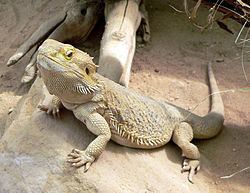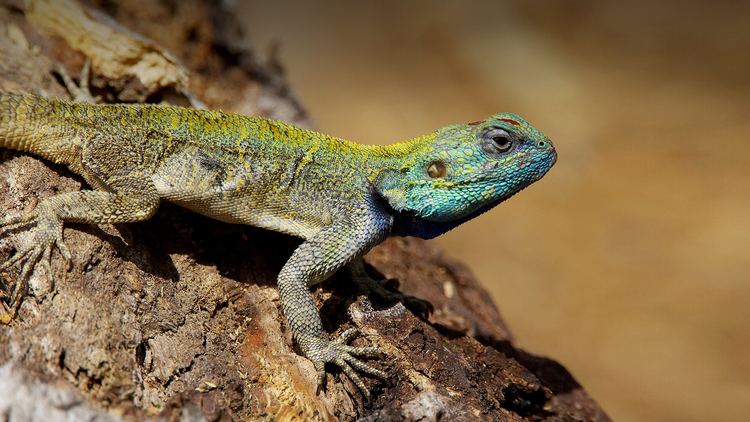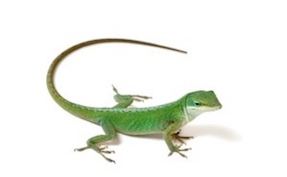Scientific name Lacertilia Phylum Chordata | Superclass Tetrapoda Higher classification Scaled reptiles Rank Suborder | |
 | ||
Lower classifications Mosasaurus, Mosasaur | ||
Lizards are a widespread group of squamate reptiles, with over 6,000 species, ranging across all continents except Antarctica, as well as most oceanic island chains. The group is paraphyletic as it excludes the snakes which are also squamates.
Contents
- Best beginner reptiles lizards
- Morphology
- Signalling
- Shedding and regenerating tails
- Reproduction
- Fossil history
- Phylogeny
- Taxonomy
- Relationship with humans
- References

Best beginner reptiles lizards
Morphology

Lizards typically have four legs feet and external ears, though some are legless, while snakes lack both of these characteristics. Lizards and snakes share a movable quadrate bone, distinguishing them from the sphenodonts, which have more primitive and solid diapsid skulls.
Lizards form about 60% of all the species of extant non-avian reptiles.

The adult length of species within the suborder ranges from a few centimeters for chameleons such as Brookesia micra and geckos such as Sphaerodactylus ariasae to nearly 3 m (9.8 ft) in the case of the largest living varanid lizard, the Komodo dragon. Some extinct varanids reached great size: The giant monitor Megalania is estimated to have reached up to 7 m (23 ft) long; while the extinct aquatic mosasaurs reached 17 m (56 ft).
Signalling
Vision, including color vision, is particularly well developed in most lizards. Most lizards communicate using body language, using specific postures, gestures, and movements to define territory, resolve disputes, and entice mates. Some species of lizards also use pheromones or bright colors, such as the iridescent patches on the belly of Sceloporus. These colors are highly visible to predators, so are often hidden on the underside or between scales and only revealed when necessary. The particular innovation in this respect is the dewlap, a brightly colored patch of skin on the throat, usually hidden between scales. When a display is needed, a lizard can erect the hyoid bone of its throat, resulting in a large vertical flap of brightly colored skin beneath the head which can be then used for communication. Anoles are particularly famous for this display, with each species having specific colors, including patterns only visible under ultraviolet (UV) light, as many lizards can see UV light.
Shedding and regenerating tails
Lizard tails are often a different and dramatically more vivid color than the rest of the body so as to encourage potential predators to strike for the tail first. Many lizards, including geckos and skinks, are capable of shedding part of their tails through a process called autotomy. This is an example of the pars pro toto principle, sacrificing "a part for the whole", and is employed by lizards to allow them to escape from predators. The detached tail writhes and wiggles, creating a deceptive sense of continued struggle, distracting the predator's attention from the fleeing prey animal. The lizard partially regenerates its tail over a period of weeks. A 2014 research identified 326 genes involved in the regeneration of lizard tails. The new section contains cartilage rather than bone, and the skin may be discolored compared to the rest of the body.
Reproduction
Most lizards are oviparous (egg laying), though in some species the eggs are retained until the live young emerge (ovoviviparity). Parthenogenesis (reproduction from unfertilised eggs) occurs in at least 50 species and may be much more widespread in the group.
Sexual selection in lizards shows evidence of female mate choice, favouring males display fitness indicators, such as fewer ectoparasites.
Fossil history
The earliest known fossil remains of a lizard belong to the iguanian species Tikiguania estesi, found in the Tiki Formation of India, which dates to the Carnian stage of the Triassic period, about 220 million years ago. However, doubt has been raised over the age of Tikiguania because it is almost indistinguishable from modern agamid lizards. The Tikiguania remains may instead be late Tertiary or Quaternary in age, having been washed into much older Triassic sediments. Lizards are most closely related to the Rhynchocephalia, which appeared in the Late Triassic, so the earliest lizards probably appeared at that time. Mitochondrial phylogenetics suggest that the first lizards evolved in the late Permian. It had been thought on the basis of morphological data that iguanid lizards diverged from other squamates very early on, but molecular evidence contradicts this.
Phylogeny
Both the snakes and the Amphisbaenia (worm lizards) are clades deep within the Squamata (the smallest clade that contains all the lizards), so "lizard" is paraphyletic. The cladogram is based on genomic analysis by Wiens and colleagues in 2012 and 2016.
Taxonomy
The name Sauria was coined by James Macartney (1802); it was the Latinisation of the French name Sauriens, coined by Alexandre Brongniart (1800) for an order of reptiles in the classification proposed by the author, containing lizards and crocodilians, later discovered not to be each other's closest relatives. Later authors used the term "Sauria" in a more restricted sense, i.e. as a synonym of Lacertilia, a suborder of Squamata that includes all lizards but excludes snakes. This classification is rarely used today because Sauria so-defined is a paraphyletic group. It was defined as a clade by Jacques Gauthier, Arnold G. Kluge and Timothy Rowe (1988) as the group containing the most recent common ancestor of archosaurs and lepidosaurs (the groups containing crocodiles and lizards, as per Mcartney's original definition) and all its descendants. A different definition was formulated by Michael deBraga and Olivier Rieppel (1997), who defined Sauria as the clade containing the most recent common ancestor of Choristodera, Archosauromorpha, Lepidosauromorpha and all their descendants. However, neither of these uses have gained wide acceptance among researchers specializing in lizards.
Suborder Lacertilia (Sauria) – (lizards)
Relationship with humans
Most lizard species are harmless to humans. Only the largest lizard species, the Komodo dragon, which reaches 3.3 m (11 ft) in length and weighs up to 166 kg (365 lb), has been known to stalk, attack, and, on occasion, kill humans. An eight-year-old Indonesian boy died from blood loss after an attack in 2007.
Numerous species of lizard are kept as pets, including bearded dragons, iguanas, anoles, and geckos (such as the popular leopard gecko).
Lizard symbolism plays a role in some cultures (e.g., Tarrotarro in Australian Aboriginal mythology). The Moche people of ancient Peru worshipped animals and often depicted lizards in their art. According to a popular legend in Maharashtra, a common Indian monitor, with ropes attached, was used to scale the walls of the Sinhagad fort in the Battle of Sinhagad.
Green iguanas are eaten in Central America, where they are sometimes referred to as "chicken of the tree" after their habit of resting in trees and their supposedly chicken-like taste, and spiny-tailed lizards are eaten in Africa. In North Africa, Uromastyx species are considered dhaab or 'fish of the desert' and eaten by nomadic tribes.
